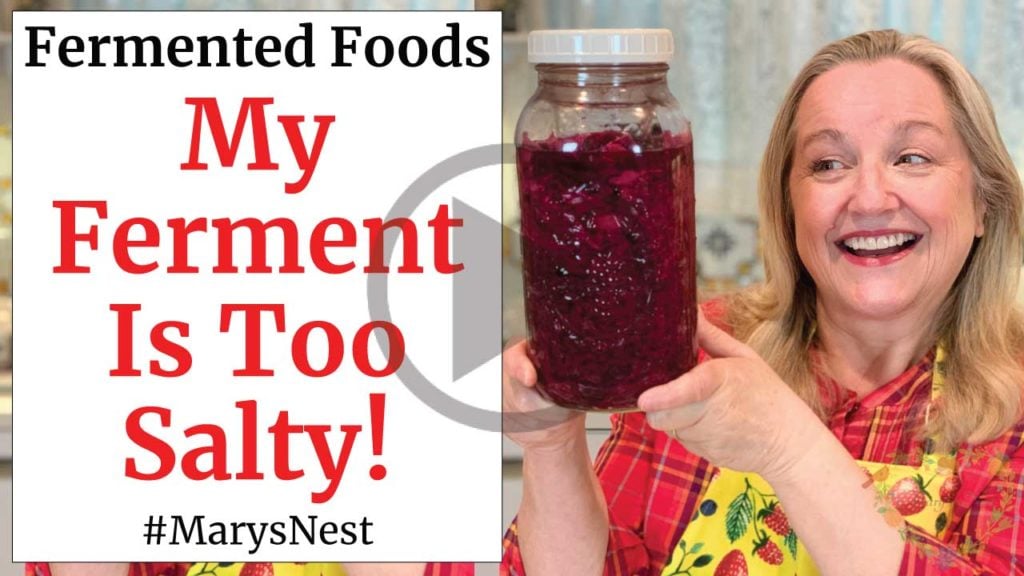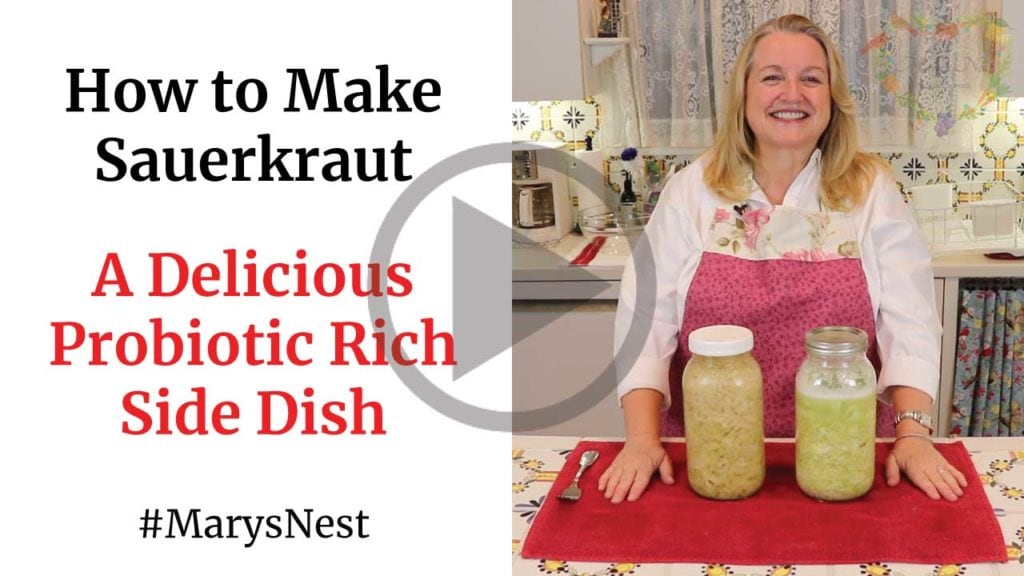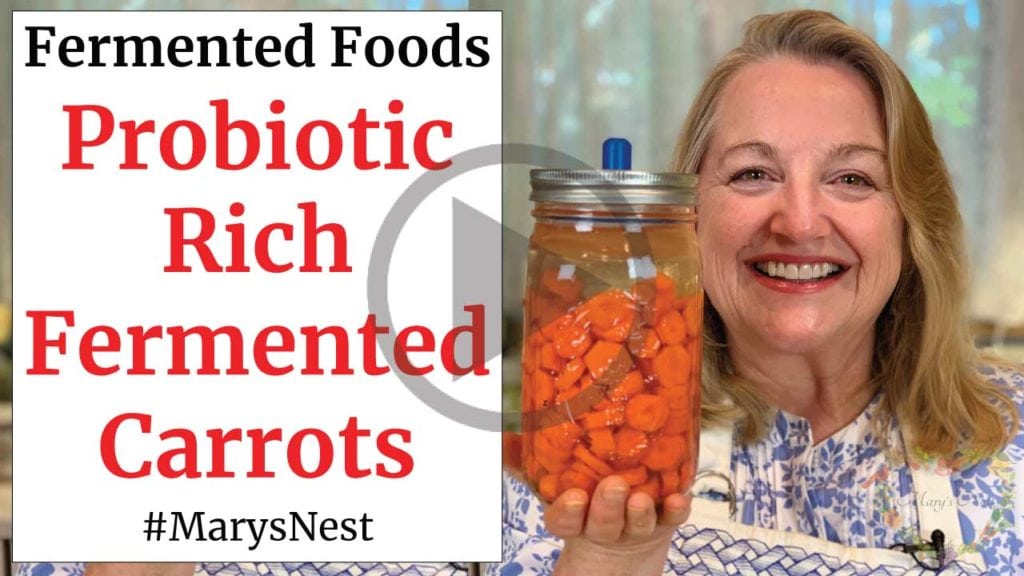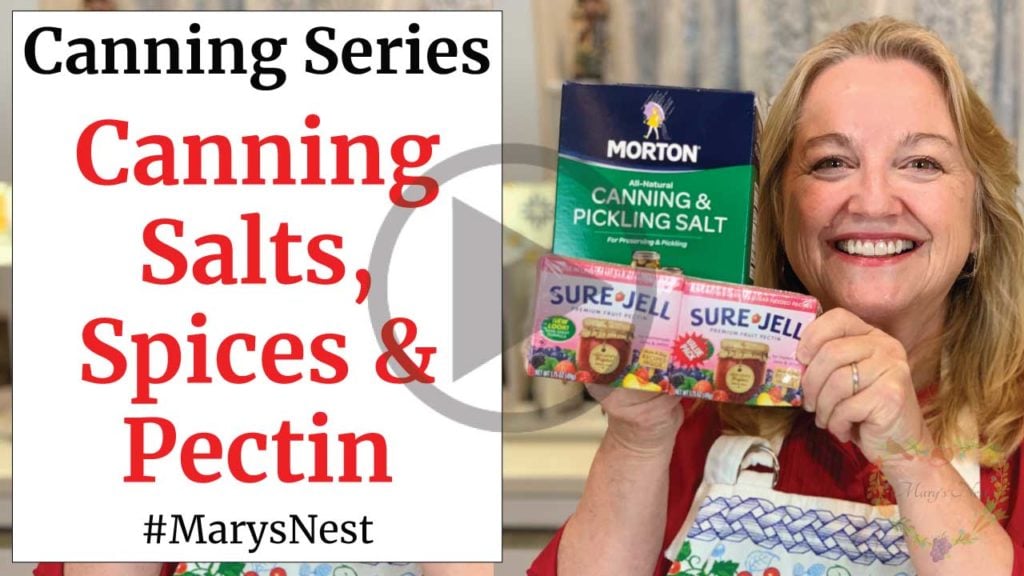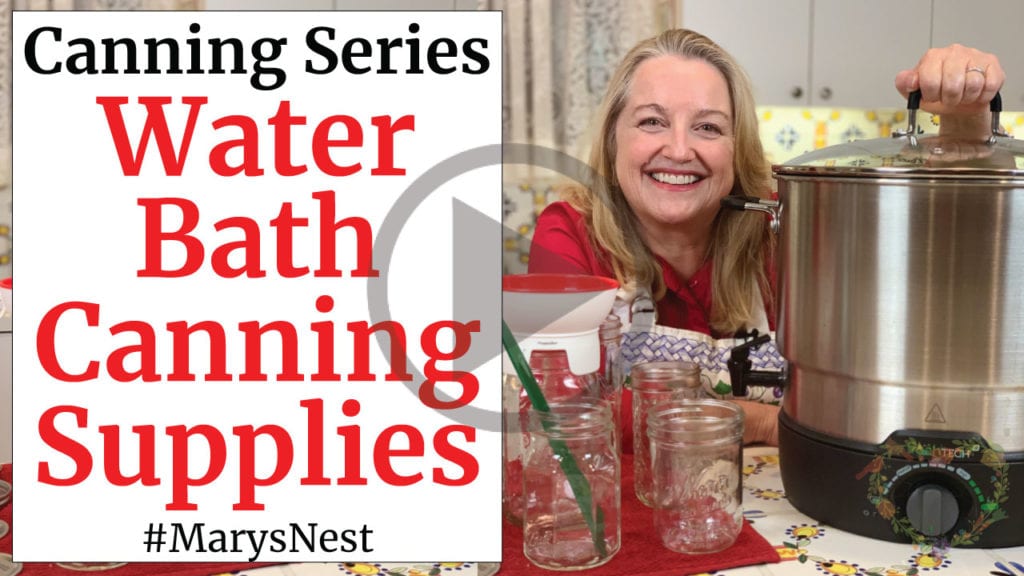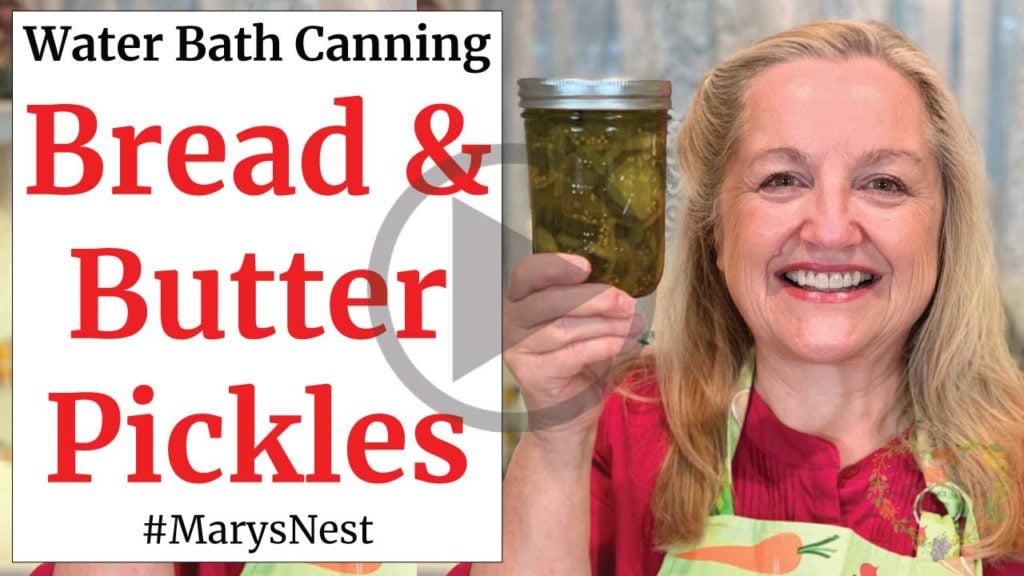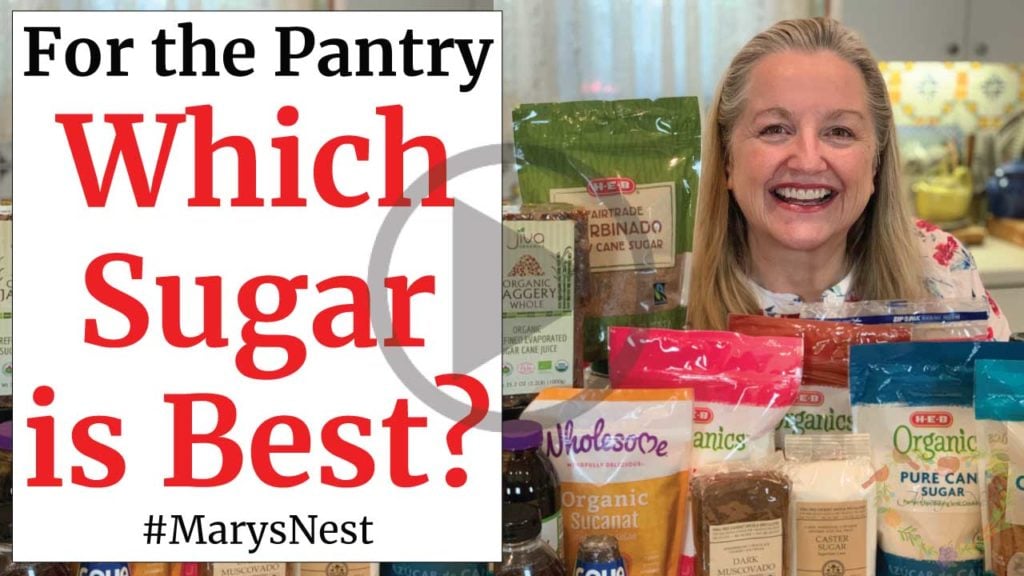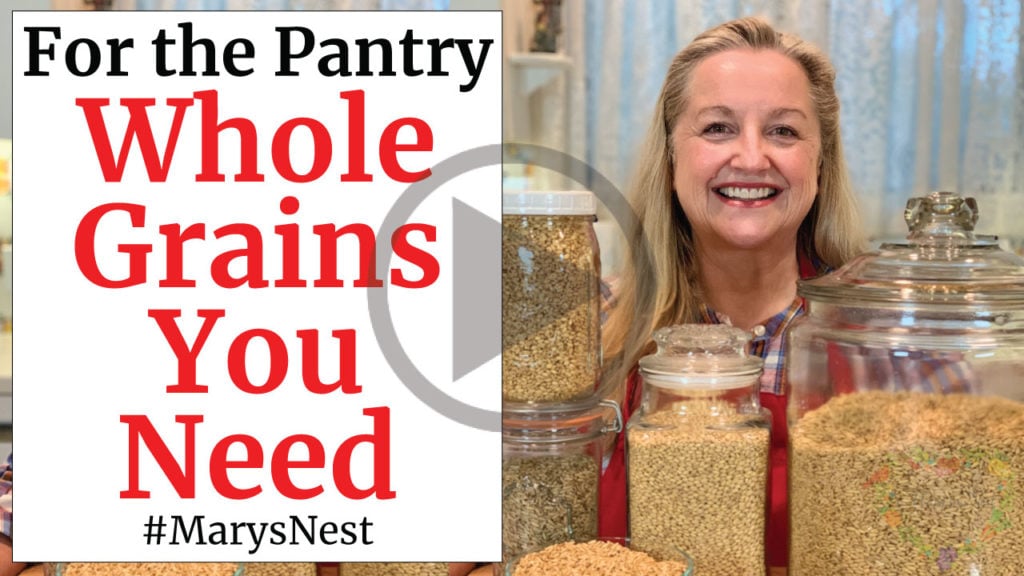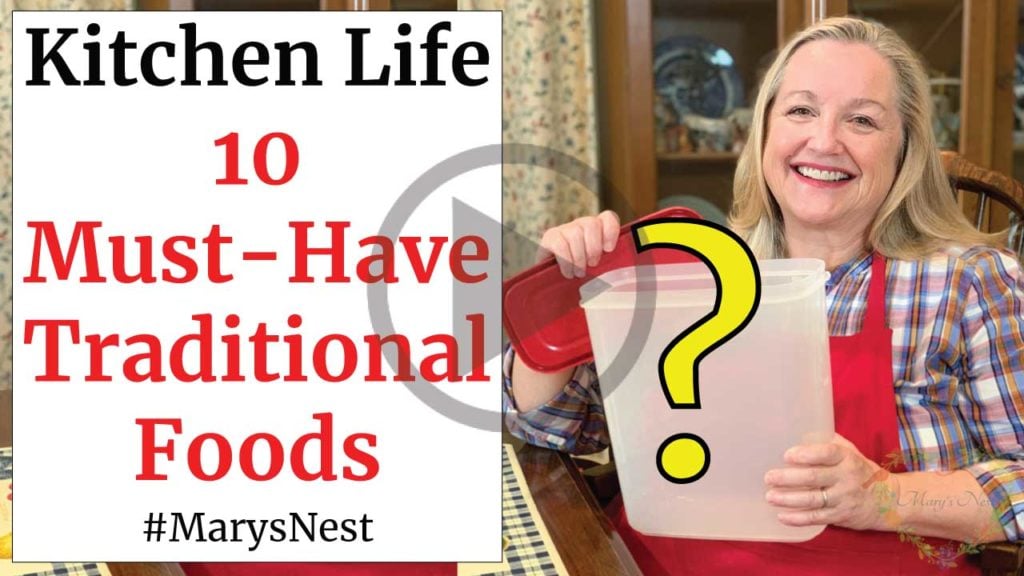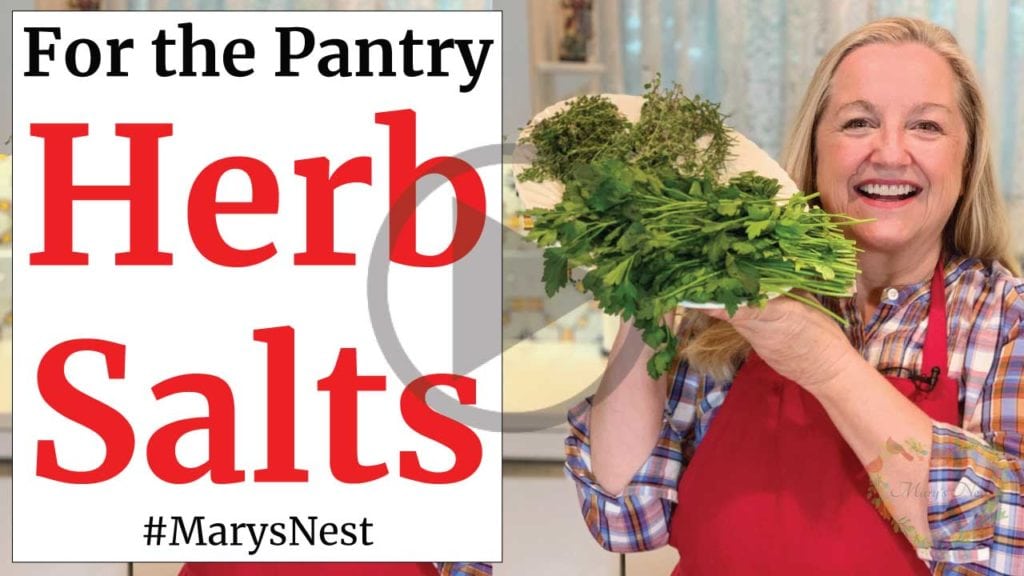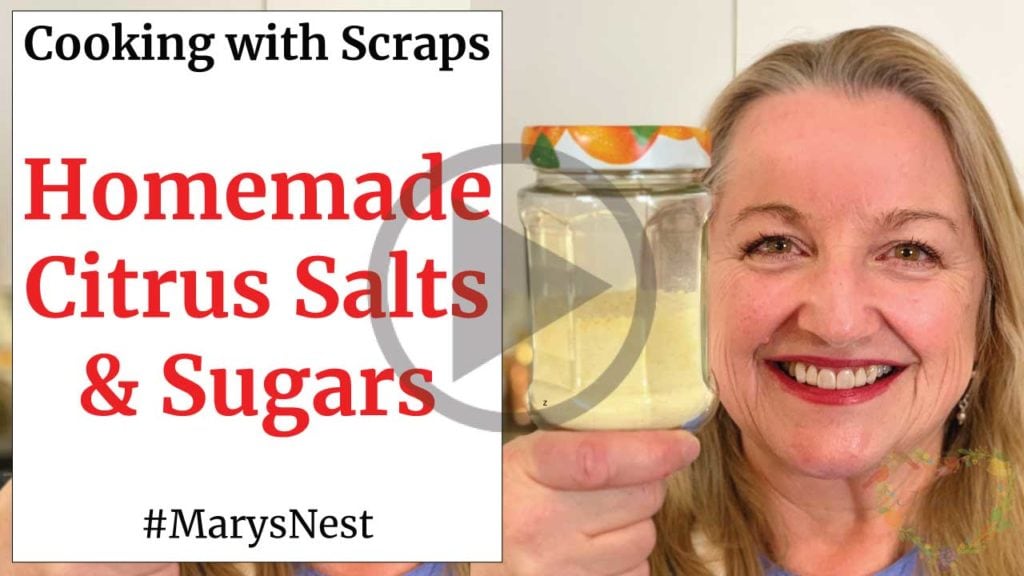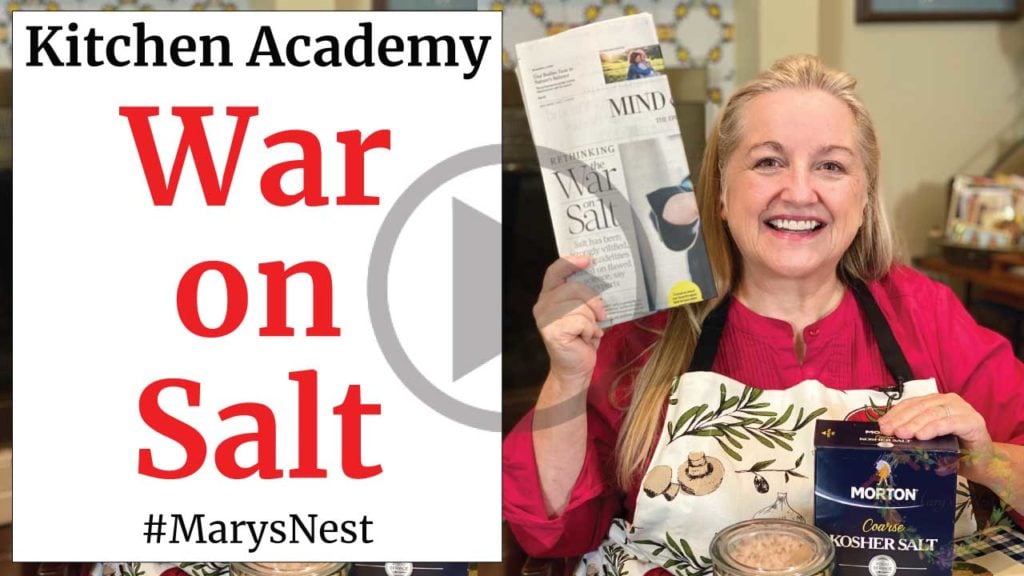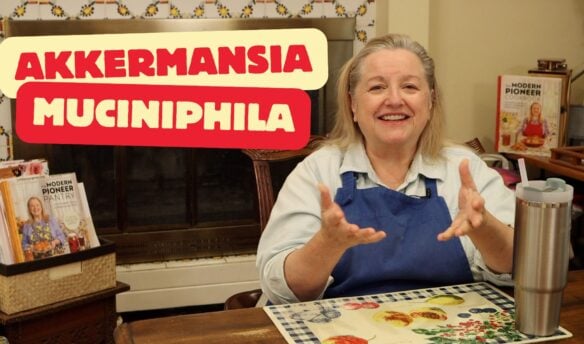I review a wide variety of salts, from common table salt to the more gourmet versions, in my latest video. Most importantly, I share which salts are essential for your Prepper Pantry because these essential salts have the least amount of microplastics. And you’ll be surprised to learn which two are the best!
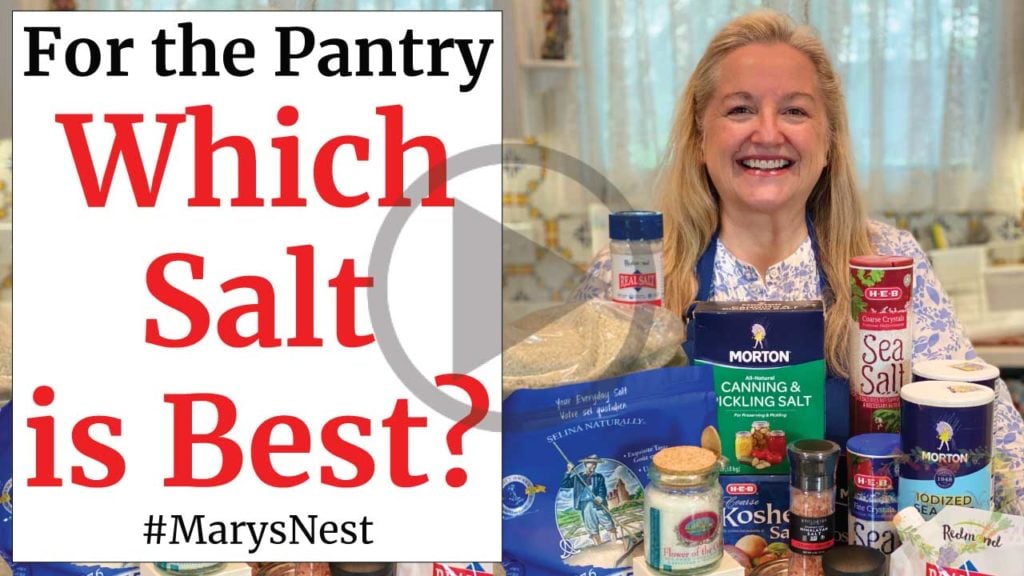
Affiliates note: As an Amazon Associate I earn from qualifying purchases. My content may contain affiliate links to products and services. If you click through and make a purchase, I’ll receive a small commission. It does not affect the price you pay.
Table of Contents
- Which Salt is Best for the Traditional Foods Pantry?
- What are Anti-Caking Agents in Salt?
- What are Microplastics?
- Which Salts have Microplastics?
- What Can You Do to Avoid Microplastics?
- Which Salts Are Best for Fermentation?
- Do You Need to Use Salt in Fermentation?
- Why is My Ferment So Salty?
- Get Started with Fermentation
- What is the Best Salt for Water Bath Canning?
- Get Started with Water Bath Canning
- Essential Pantry Videos
- The Modern Pioneer Pantry
- Download Your Free 36-Page Pantry List
- The Modern Pioneer Cookbook
- More Salt Recipes
- Join the Traditional Foods Kitchen Academy
- Kitchen Academy Videos
- Shop for items used in this blog post or video
Which Salt is Best for the Traditional Foods Pantry?
When it comes to stocking your traditional foods pantry, be sure to choose pure salts. You want to avoid salts with added ingredients, such as those with anti-caking agents.
When you use salts with anti-caking agents, you are limiting the recipes where you can use these salts in traditional foods cooking. Yes, you can use salts with these added ingredients for cooking and seasoning, but you cannot use them when making ferments.
What are Anti-Caking Agents in Salt?
Anti-caking agents are additives in salt that prevent the salt from clumping. The agents absorb moisture, but those same additives can interfere with the fermentation process.
During fermentation, you do not want additives that will absorb moisture, because moisture is exactly what your ferment needs! So when it comes to the fermentation process, steer clear of salts with these agents to guarantee that you will have a successful ferment.
What are Microplastics?
Microplastics are small particles of plastic—no larger than 5mm—which unfortunately come from the plastics that pollute our oceans. Over time, these plastics degrade into smaller microplastic particles that enter into our food supply through salt, seafood, and other foods as well.
But why does this matter? Microplastics contain chemicals that are detrimental to our health. Our bodies can handle some of these chemicals by flushing them out of our system through our waste products and our sweat. However, whenever possible, we want to help our body’s systems by preventing or reducing the amount of unnecessary chemicals in our diet.
Reference Sources
- What are microplastics? (National Oceanic and Atmospheric Administration)
- Plastic and Human Health: A Micro Issue? (Environmental Science and Technology)
Which Salts have Microplastics?
Unfortunately, most salt contains some percentage of microplastics. In my essential salts video, I talk about the salts with the highest amount of microplastics and those with the lowest.
When it comes to microplastics in salts, studies have found that approximately 90% of all table salt contains microplastics. Table salts contain a higher percentage of microplastics than other salts.
Salts with the Least Amount of Microplastics
On the other end of the salt continuum, the same studies showed that these salts contained the least amounts of microplastics:
- Grey Celtic Sea Salt (Amazon links: Fine ground , Coarse ground)
- Redmond Real Salt (Amazon links: Fine ground , Coarse ground)
Discount code: For Redmond Real Salt and other products from the Redmond Real Life website use this link and discount code MARYSNEST for 15% off your purchase. (Discount will appear at checkout.)
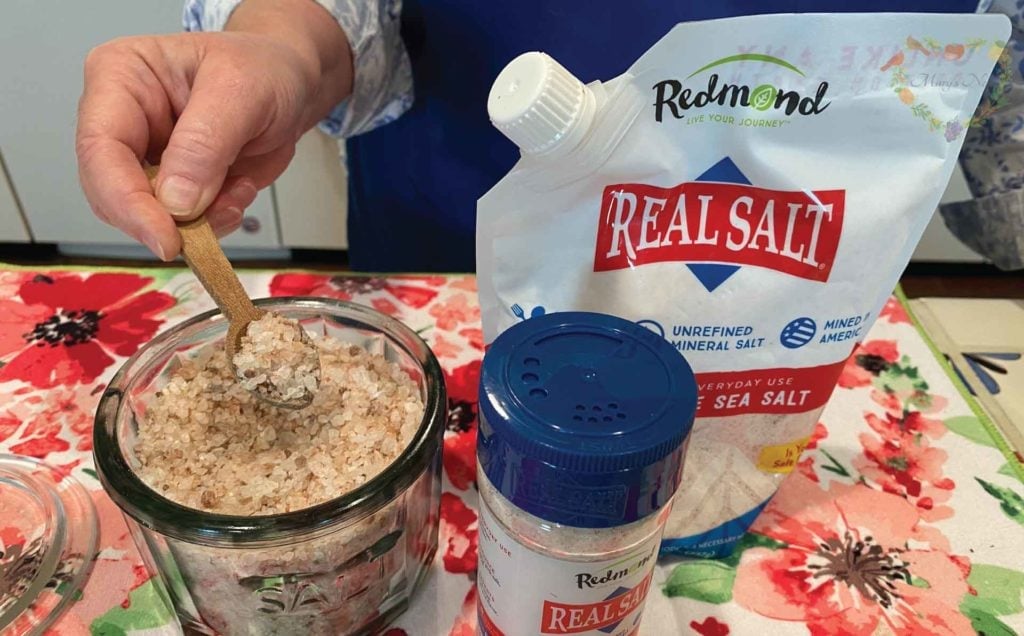
Be sure to watch my essential salts video to learn more about these salts and others. You’ll be quite surprised to learn that a particular kind of mined salt actually contains one of the highest amounts of microplastics!
Reference Sources
- Microplastics in Food: A Review on Analytical Methods and Challenges
- Anthropogenic contamination of tap water, beer, and sea salt
- Global Pattern of Microplastics (MPs) in Commercial Food-Grade Salts: Sea Salt as an Indicator of Seawater MP Pollution
In addition to these scientific studies, you might also enjoy this informative website article that reviewed the Anthropogenic contamination study. The Ascent to Health article breaks the research down into simple English with an easy-to-read chart.
What Can You Do to Avoid Microplastics?
Avoiding microplastics in today’s world is next to impossible, whether you eat salt or not. These tiny particles are found in a variety of foods, including seafood, milk, beer, and many other processed and packaged food.
Sometimes, in the case of milk and processed food, the microplastics enter these foods during the packaging process. So what are we to do?
Since microplastics are prevalent in much of our food supply. To avoid microplastics, all we can do is the best we can do, and this includes:
- Avoid a processed food diet whenever possible
- Search out whole real foods, such as:
- Meat and eggs from pasture-raised animals
- Raw milk in glass bottles
- Locally-grown fruits, vegetables, and grains
- And when it comes to salt, search out those varieties that have been scientifically tested to contain the least amount of microplastics
Which Salts Are Best for Fermentation?
I am often asked which are the best salts to use when it comes to making ferments? The answer is any pure salt, which is a salt that does not contain any anti-caking agents or other added chemicals.
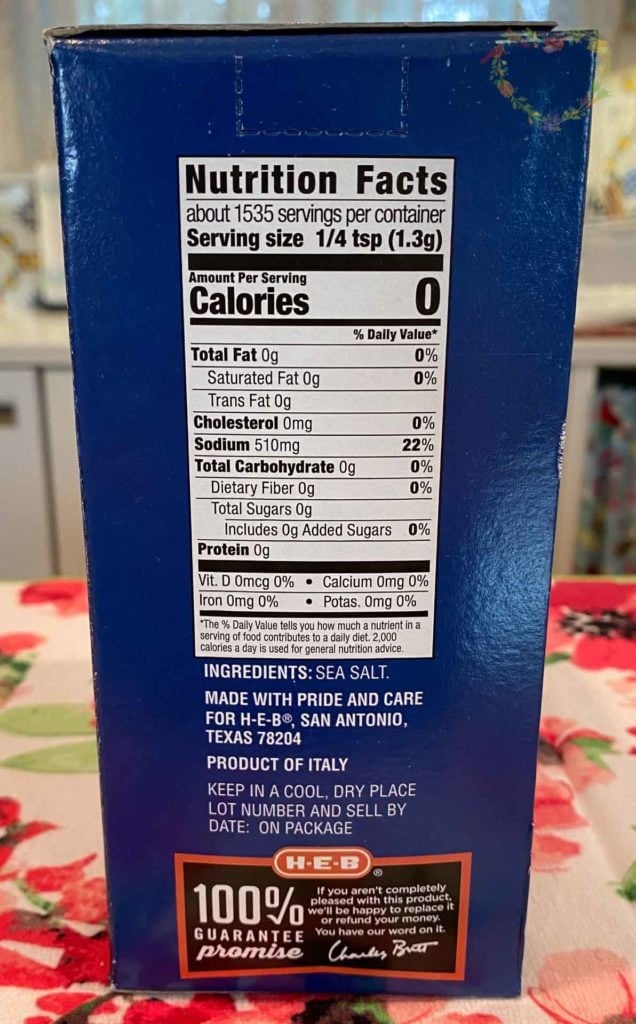
Take a look at the salt that you’re planning to use. The package ingredients should simply read “salt” or “sea salt.” Nothing else. We still have to deal with the problem of microplastics in salt, but we can at least search out those with the lowest amounts, as I described earlier.
Do You Need to Use Salt in Fermentation?
Many of you have asked me, do you need to use salt at all in vegetable fermenting? And the answer is no. You can ferment without using salt and instead use whey or seeds, such as celery seeds.
However, salt provides some assurance of a successful ferment, as well as a tasty one! Salt helps the fermentation process by keeping the bad bacteria at bay while allowing the good bacteria to proliferate. So when it comes to ferments, salt is my number one choice.
Why is My Ferment So Salty?
If you are new to fermenting, you may be wondering why your ferment tastes so salty at the beginning of the fermentation process. Not to worry! That’s normal.
In my tutorial video below, I go over all details to reassure you that when your ferment is ready, it will taste great.
Get Started with Fermentation
If you are completely new to fermentation, try making sauerkraut as your first ferment. It’s easy to do, and in the video below, I walk you through the entire process step-by-step. This tutorial video is the perfect class for the beginner on fermentation. Plus, I share a little secret ingredient that I always like to use when making cabbage ferments to guarantee their success!
Once you master sauerkraut, be sure to try your hand at fermented carrots. These are not only rich in probiotics, but they are also delicious!
What is the Best Salt for Water Bath Canning?
When it comes to certain types of water bath canning, such as canning pickles, you will want to use salt for flavor. Salt packaged as canning and pickling salt is generally recommend. This type of salt is pure salt with no anti-caking agents or other added chemicals.
Can you use other salts instead of those labeled as canning salts? Definitely, but just make sure they are pure plain salt. You want to use plain salt because the extra ingredients, such as anti-caking agents, that are added to some salts may negatively affect the canning process.
In my Water Bath Canning 101 video series, I talk about the different canning salts, spices, and pectin that you can choose from.
Get Started with Water Bath Canning
Are you new to water bath canning? If so, I have a series of videos that will help you learn this excellent skill that every traditional foods cook should know. Check out my videos below, where I walk you through everything you need to get started.
Once you have your supplies on hand, give these bread and butter pickles a try. You’ll never buy them at the store again!
Essential Pantry Videos
Want more ideas for how to stock your Prepper Pantry? Watch the following videos where I share detailed information on how to stock your pantry with:
And if you are on your journey to transitioning from a processed foods kitchen to a Traditional Foods Kitchen, don’t miss this video where I share the 10 must-have foods you definitely want to have in your pantry!

Order YOUR COPY Now!
The Modern Pioneer Pantry
Simple ingredients, timeless techniques, and a well-stocked pantry. Discover over 100 nourishing recipes to preserve food and turn pantry staples into delicious, homemade meals. Build a wholesome, traditional pantry—just like a modern pioneer!
Download Your Free 36-Page Pantry List
Need help determining what you should be adding to your traditional foods pantry? I have you covered with this free 36-page pantry list eBook that walks you through what to buy and how to turn those ingredients into delicious and nutritious meals!
More Salt Recipes
Once you decide what salt you want to stock in your pantry, try out the following special recipe videos to create herb salts and homemade citrus salts and sugars.
Join the Traditional Foods Kitchen Academy
Are you looking for more traditional foods videos? I invite you to join the Traditional Foods Kitchen Academy. Members of this optional paid YouTube community get access to exclusive videos and other members-only perks. Plus, your YouTube comments include a special members-only badge.
In the following members-only video, I talk about How to Make Salt Part of a Healthy Diet.
Kitchen Academy Videos
How to Make Oatmeal Higher in Protein (The Old-Fashioned Way)
Turn simple oats into a hearty, protein-rich porridge.
The Only Traditional Recipes You’ll Ever Need!
Focus on traditional recipes with real food. Don’t chase trends.
Let’s Talk Akkermansia: A Tiny Helper for Big Gut Health
Discover how Akkermansia muciniphila supports gut and immune health—and how traditional foods help this mighty microbe thrive.
Stay in Touch with Mary’s Nest
- Subscribe to My YouTube Channel for Traditional Foods Videos (Free) - When you subscribe, be sure to click on the notification bell that will let you know each time I upload a new video.
- Subscribe to Mary’s Traditional Foods Newsletter (Free) - Get a free 36-page eBook for signing up: How to Stock Your Essential Traditional Foods Four-Corners Pantry.
- Join the Traditional Foods Kitchen Academy - For more detailed videos and exclusive members-only perks, join my YouTube membership community.
- Order The Modern Pioneer Cookbook - Get a hardcover book of Mary's nourishing recipes from a Traditional Foods Kitchen. This bestselling cookbook is published by Penguin Random House with their DK imprint.
- Order The Modern Pioneer Pantry - Get Mary's latest hardcover cookbook about preserving food and making delicious meals from your Four Corners Pantry. Mary's second cookbook is also published by Penguin Random House.
I look forward to having you join me in my Texas Hill Country Kitchen!
Shop for items used in this blog post or video
Best Salts
- Fine Ground Celtic Sea Salt
- Coarse Ground Celtic Sea Salt
- Fine Ground Redmond Real Salt
- Coarse Ground Redmond Real Salt
Discount code: For Redmond Real Salt and other products from the Redmond Real Life website use this link and discount code MARYSNEST for 15% off your purchase. (Discount will appear at checkout.)
Favorite Prepper Pantry Supplies
- Half Gallon Canning Jars
- Ball Electric Water Bath Canner
- 5 Gallon Buckets with Lids
- Gamma Lids – White
- 1 Gallon Mylar Bags
- 500CC Oxygen Absorbers
- 10g Silica Gel Packs
- Handheld Foodsaver with Docking Port
- Foodsaver Jar Adapter Kit
Favorite Kitchen Supplies
- Favorite Aprons
- Spice Grinder
- Countertop Burner (On my kitchen island in many recipe videos.)
- Handheld Vacuum Sealing System
- Vacuum Lids
- Whisk
- Silica Gel Packets (Helps keep moisture from building up in your mix)
- Cast Iron Dutch Oven
- 8-Quart Slow-Cooker
- Fat Separator (Clever kitchen device to help you decant bone broth)
- Flour Sack Towels
- pH Strips (Helps you check on the acidity of your vinegar)
Amazon Shop and Shopping Guide
- Visit Mary’s Nest Amazon Shop
- Get a 30-day Audible trial with a free audiobook
- Visit my Shopping Guide page
Get up to 15% off for stocking your Traditional Foods Pantry and equipping your Modern Pioneer Kitchen, including discounts from US Wellness Meats, Farmhouse Teas, Backwoods Home, Masontops, Cultures for Health, Survival Garden Seeds, Redmond Real Salt, and More!
Recommended Reading
- The Modern Pioneer Cookbook
- The Modern Pioneer Pantry
- Nourishing Traditions
- The Salt Book: Your Guide To Salting Wisely and Well, With Recipes
- The Art of Fermentation: An In-Depth Exploration of Essential Concepts and Processes from around the World
- Wild Fermentation: The Flavor, Nutrition, and Craft of Live-Culture Foods (2nd edition)
- Prepper’s Pantry: Build a Nutritious Stockpile to Survive Blizzards, Blackouts, Hurricanes, Pandemics, Economic Collapse, or Any Other Disasters
- Emergency Food Storage & Survival Handbook: Everything You Need to Know to Keep Your Family Safe in a Crisis
